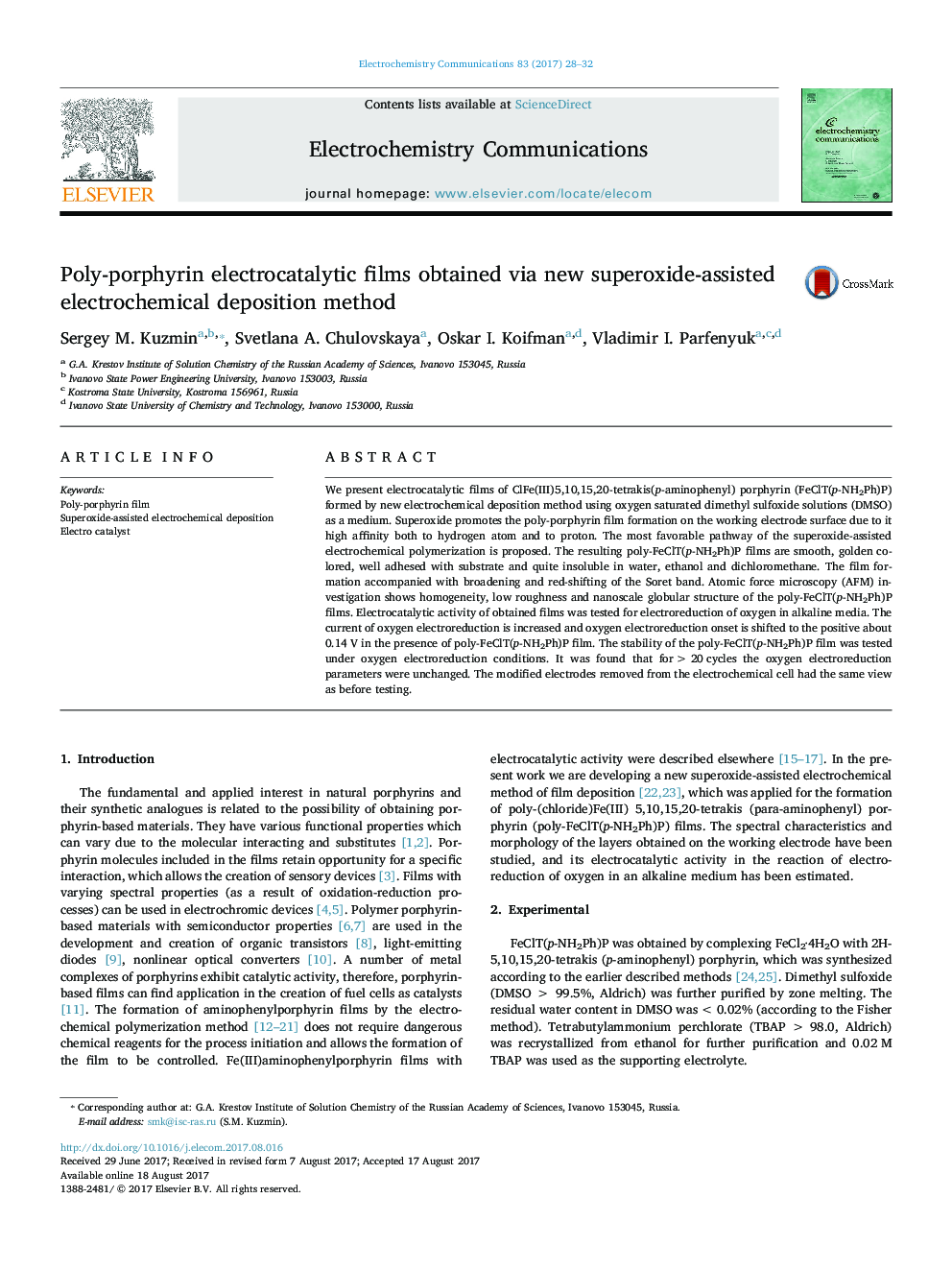| Article ID | Journal | Published Year | Pages | File Type |
|---|---|---|---|---|
| 6469510 | Electrochemistry Communications | 2017 | 5 Pages |
â¢New method of electrochemical depositionâ¢Pathway of the superoxide-assisted electrochemical polymerizationâ¢Preserved structure of the porphyrin core in a polymerized stateâ¢Fe(III)aminophenylporphyrin films with electrocatalytic activity
We present electrocatalytic films of ClFe(III)5,10,15,20-tetrakis(p-aminophenyl) porphyrin (FeClT(p-NH2Ph)P) formed by new electrochemical deposition method using oxygen saturated dimethyl sulfoxide solutions (DMSO) as a medium. Superoxide promotes the poly-porphyrin film formation on the working electrode surface due to it high affinity both to hydrogen atom and to proton. The most favorable pathway of the superoxide-assisted electrochemical polymerization is proposed. The resulting poly-FeClT(p-NH2Ph)P films are smooth, golden colored, well adhesed with substrate and quite insoluble in water, ethanol and dichloromethane. The film formation accompanied with broadening and red-shifting of the Soret band. Atomic force microscopy (AFM) investigation shows homogeneity, low roughness and nanoscale globular structure of the poly-FeClT(p-NH2Ph)P films. Electrocatalytic activity of obtained films was tested for electroreduction of oxygen in alkaline media. The current of oxygen electroreduction is increased and oxygen electroreduction onset is shifted to the positive about 0.14Â V in the presence of poly-FeClT(p-NH2Ph)P film. The stability of the poly-FeClT(p-NH2Ph)P film was tested under oxygen electroreduction conditions. It was found that for >Â 20Â cycles the oxygen electroreduction parameters were unchanged. The modified electrodes removed from the electrochemical cell had the same view as before testing.
Graphical abstractDownload high-res image (108KB)Download full-size image
